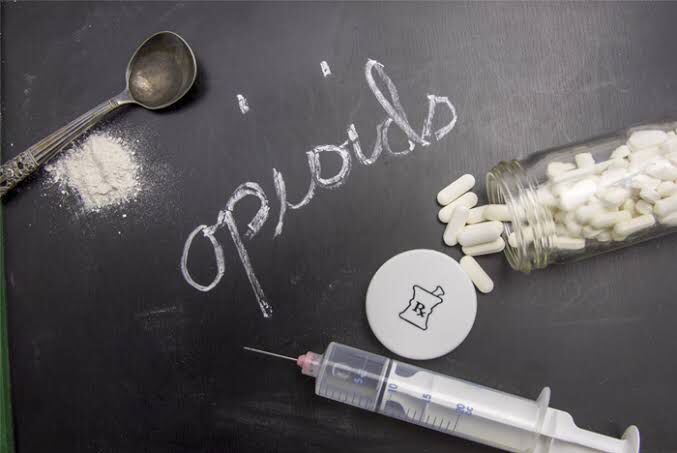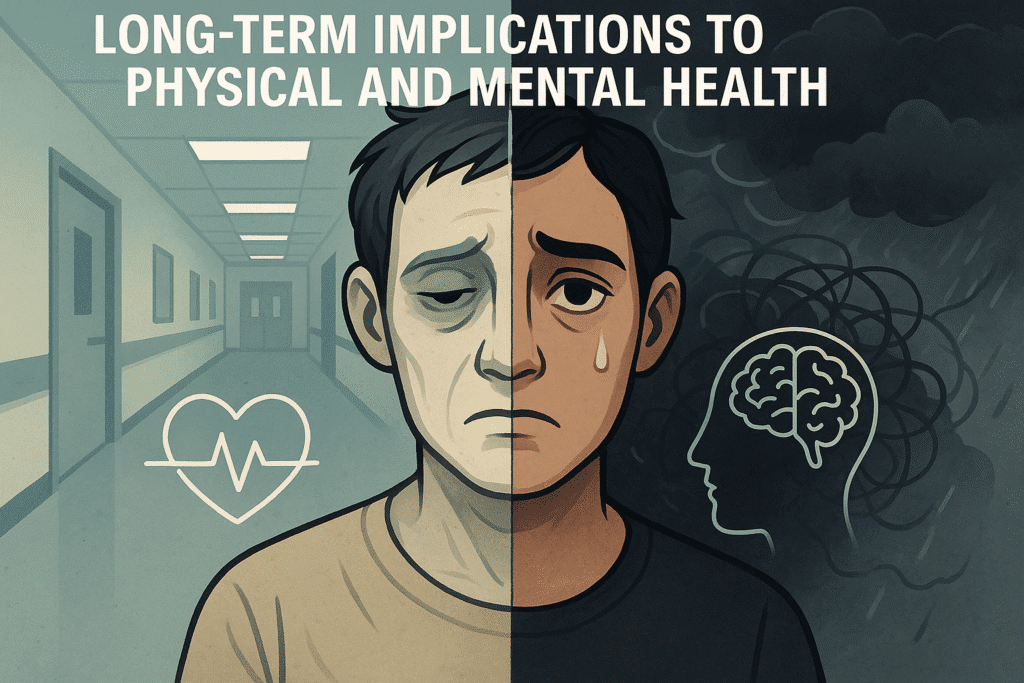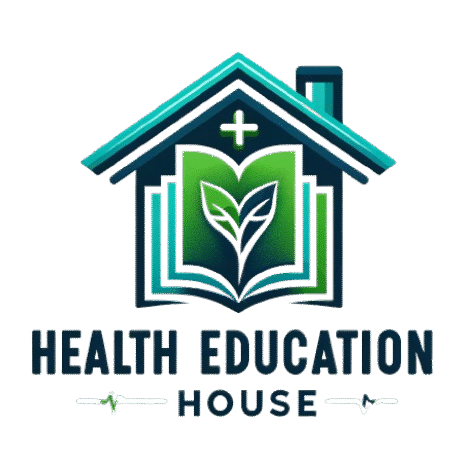In Past, there were almost 50 thousand fatalities related to opioid-involved overdoses in America, and an even greater number of deaths can be attributed directly to opioids. The problem is not limited to the casualties it also concerns people, families, and communities across America. To the victims of opioid addiction, seeking proper assistance is a tall order. The article is the navigation journey toward comprehension of the causes, identification of the symptoms, and the possibilities of treatment options of opioid addiction, and support of personal associated with it.
With the aid of the needed resources and support, the reclamation of your life that is held captive by opioid addiction is possible. We aim to help you with information by which you can make the initial step towards recovery of opioid.
What are Opioids and How They Work?
Opioid is a category of drugs whose use is common in relieving pain they come with the risk of high abuse that has resulted in a national health complication. The effects of Opioids are that they stimulate opioid receptors in the brain and body, and create euphoric emotions and a state of relaxation. It is this mechanism that makes them good at relieving pain and the same mechanism that makes them as having its potential of becoming addictive.

Common Prescription and illicit Opioids
The classification of opioids is into prescription opioids which include oxycodone and hydrocodone, and illicit ones (heroin). Prescription opioids may be taken in order to control moderate, severe pain, whereas illicit ones are restricted substances that are very addictive. It is also important to learn the contrasts of these types to treat opioid addiction.
The Impact of Opioids in the Brain and Body
Opioids can have varying effects when they attach to opioids receptors, such as pain and intense pleasure. With a long-term use, the brain chemistry can change, and one can become dependent and get addicted. Its physical effects may involve constipation, drowsiness as well and severe cases of respiratory depression.
The Fine Line between Medical Use and Abuse
The difference between legitimately taking opioids and misusing them may be thin. The risk of addiction depends on such factors as dosage, a period of usage, and susceptibility. Being knowledgeable about them is the major procedure to secure prescribing and avoid abuse.
Opioid Addiction Causes and Risk Factors
Root causes and risk factors of opioid addiction are essential in judgements that facilitate proper prevention and treatment. The problem of opioid addiction is quite complicated and it appears to be the result of multiple factors.
The Path from Prescriptions to Addiction
Addiction to opioids usually melts down the introduction of a valid order due to the presence of pain. Yet, it is addictive after using it for a prolonged period, the body becomes dependent and gets used to opioids. This may progress towards addiction which is the compulsive seeking tendency of drugs even when they bring down the side effects.
Environmental and Genetics Factors
In susceptibility to opioid addiction, genetic predisposition is also quite essential. Those people who have a history of substance abuse in their family are at more risk. The risk also depends on environmental factors including exposure to opioids at an early age or exposure to an environment where the use of the opioids is high.
Co-Morbid Mental Conditions
In most cases, opioid addicts have a mental issue like depression or anxiety. These disorders may be a cause as well as a consequence of the use of opioids and they are often a part of a complex scenario, which is not easily overcome without the extensive treatment. It is important to note such factors in order to come up with mechanisms of preventing and treating opioid addiction. The causes and risk factors can be used to provide more focused interventions by the healthcare providers.
Recognizing the Signs of Opioid Addiction
It is important to understand the symptoms of opioid addiction to facilitate its early treatment. Opioid addiction may occur differently and in such situations, it would be necessary to have knowledge of the various symptoms.
Physical Symptoms
Among the most visible signs of opioid addiction are usually physical ones. These maybe:
- Alteration of appetite or sleeping patterns
- Weight loss or weight gain that is not explainable
- Sounding speech or poor coordination
- Sleepiness or fatigue
Physical symptoms of withdrawal may also be noticed in those with opioid addiction that face an issue when trying to cease or decrease the usage of opioids. These symptoms may be rather unpleasant and even harsh.
Behavioral and Psychological
Other really noticeable changes are behavioral and psychological shifts caused by opioid dependence. Some general signs are:
- Become even more closed or secluded
- Depression or mood swings or being short-tempered
- The deprivation of interest in activities that one used to enjoy
- Deceptiveness or rebuff when caught consuming opioids
Social and Financial impacts
Opioid addiction has social and monetary repercussions that may run deep. People can undergo:
- Poor family and friend relationship
- Economic problems caused by go getting opioids
- Issues in the workplace or school because of the poor performance
- Legal complications with possessions or making use of opioids
Knowledge on these signs may also assist in the early detection of opioid addiction. The most important indicators can be summed up with the following table:
| Category | Common Signs |
| Physical Symptoms | Changes in appetite, sleep disturbances, slurred speech, drowsiness |
| Behavioral/Psychological Indicators | Mood swings, increased secrecy, loss of interest in activities, defensiveness |
| Social/Financial Consequences | Strained relationships, financial difficulties, work/school problems, legal issues |
The Hazards of Opioid Overdose
Risks linked with the usage of opioids are varied, including the risks of the immediate health consequences as well as those which are developed over time. Abuse of opioids may result into numerous severe health conditions, distressed relationships and a severe decline of the quality of life.
Short-term Health Threats
Among the most notable short-term dangers of opioid abuse, we can state overdose, which is also deadly. Opioids have the possibility of reducing breathing rates to serious levels that will result in the respiratory system failure. Another short term health hazard is drowsiness, confusion, and nausea.
Long-term Implications to Physical and Mental Health
There are many physical and mental health problems which can be caused by long-term opioid abuse. On a physical note, it may create a liver disease and a higher level of infections, since the immune systems are weakened. At a mental level, they will suffer depression, anxiety, and loss of cognition.

Effect on Relationships and Quality of Life
The abuse of opioids may significantly affect a person in relation to their relationships and the quality of life. It may result in poor relations with family, loss of jobs and isolation. Addiction counseling is among the most important steps toward recovery and rehabilitation of life.
The first step is to understand the danger of opioid abuse since it is important to address this issue. Through the identification of the risks and consequences, a person can get the needed assistance in order to get rid of their addiction.
Drug Withdrawal Opioids: Symptoms and Treatment
Effective treatment of opioid withdrawal needs to be informed about the symptoms, the course of opioid withdrawal treatment and the necessity of medical monitoring of the process. Opioid withdrawal is a series of physical and psychological symptoms that happen when a person stops using the opioids, after a spell of dependence.
Common Withdrawal Symptoms
The symptoms of withdrawal may be minor or serious. Some of the common symptoms are:
- Restlessness and anxiety
- Pain in muscles and bone pain
- Inability to sleep and disturbance of sleep
- Vomiting and nausea
- Diarrhea and abdominal pains
Factors of Timeline and Severity
The opioid withdrawal effects may be different, but the maximum effect is normally experienced after two to four days and ends in a week or more depending on that person and the substance he/she is using. Examples of issues that affect severity are the type of opioid and how long you use it, as well as the overall health.
Palliative Care and Symptom Management
When one is withdrawing opioids, medical attendance is very important so that one can manage the symptoms and avoid complications. Treatment of the symptoms can be prescribed by healthcare providers and hydration, nutrition, and rest can be used as a means of comfort.
Opioid withdrawal is a very important stage towards recovery. By learning about symptoms, time frame, and the possible support actions, people will become more prepared to move through this difficult process.
Possible Treatment of Opioid Addiction
The primary approach of treating opioid addiction has to be all-inclusive to the extent that it encompasses physical and psychological components. A complex of medical interventions, methods of healing, and supportive systems should be chosen to treat the patient effectively.
Medication assisted treatment (MAT)
Medication-Assisted Treatment (MAT) plays an essential part in the treatment of opioid addicts. MAT presupposes treating symptoms of withdrawal and cravings with such medications as methathone, buprenorphine, and naltrexone. It was demonstrated that MAT enhances the treatment outcome and minimizes the danger of overdose.
Inpatient Rehabilitation Programs
The inpatient rehabilitation program offers a regimen where patients receive intensive care. These programs provide constant care 24/7 such as medical supervision, counseling and therapy. The programs offered inpatient especially work well with the people who are seriously addicted or have co-occurring mental illnesses.
Outpatient Therapies
These outpatient treatment methods provide a supplement of flexibility to persons that choose not to be or unable to be in a residential facility. Outpatient programs are of varying intensity and they include:
Intensive Outpatient programs (IOPs)
IOPs give systematic therapeutic experiences and numerous appointments most weeks, usually a few hours per day. The programs are always suitable when a person requires high-level updates and is able to live at home.
Partial Hospitalization Programs (PHPs)
Patients can access a high level of care like inpatient programs without leaving home at night because they are using PHPs. The PHPs are applicable when a patient needs intense treatment and medical surveillance but does not need to be put in a hospital round the clock.
The table below demonstrates the main peculiarities of the discussed treatment options:
| Treatment Option | Key Features | Benefits |
| Medication-Assisted Treatment (MAT) | Use of medications to manage withdrawal and cravings | Reduces overdose risk, improves treatment outcomes |
| Inpatient Rehabilitation | 24/7 care, medical supervision, counseling | Structured environment, intensive therapy |
| Intensive Outpatient Programs (IOPs) | Multiple sessions per week, several hours a day | Flexible, significant support, living at home |
| Partial Hospitalization Programs (PHPs) | High-level care, therapy, medical monitoring | Intensive care without 24/7 hospitalization |
The type of treatment to undergo is determined by the personal needs of an individual, his/her level of addiction, and personal situation. With the assistance of a healthcare professional, one will be able to determine the most suitable way of treatment.
Role of Therapy in Recovering Opioid Addiction
Therapy helps the patient in the process of overcoming addiction to opioids and offers necessary means and support. Therapy is important in making the people realize the addiction and then control it, learn to cope up with the addiction, and enhance their livelihood standard.
Personal Counseling Methods
The main element of opioid addiction therapy is individual counseling. It constitutes receiving cancer-to-cancer treatment, going hand-to-hand with a therapist and establishing the background roots of the problem with addiction, equipping your coping mechanisms, and devising an individualized recovery strategy. Two strongly efficient strategies which assist people in ensuring they controlled their cravings and are not likely to fall back are CBT (cognitive-behavioral therapy) and contingency management.
Group Therapy Benefits
Group therapy entails a caring community setting where people get away with their stories, find solidarity, and hear the experiences of fellow affected persons undergoing similar difficulties. Such a joint atmosphere has a sharing effect and allows people to feel a sense of belonging and responsibility, which are instrumental elements of long-term recovery.
Family Therapy and Healing Relationship
Family therapy engages the significant people in the life of the individual in the recovery process and facilitates repairing of broken relationships and providing a good home base. Family therapy encourages learning by the members of the family about the concept of addiction and recovery, increasing understanding and collaboration, both of which are essential to the long-term success of the person.

Treatment of Co-occurring Mental Health Challenges
Depression or anxiety is one of the co-occurring mental health disorders in many persons with opioid addiction. The treatment of the problems is looked at through therapy, where there is integrated treatment that tackles both the disorder and the mental condition at the same time. This holistic measure is important in attaining as well as sustaining recovery.
| Therapy Type | Benefits | Key Components |
| Individual Counseling | Personalized support, coping strategies | CBT, contingency management |
| Group Therapy | Supportive community, shared experiences | Group sessions, peer support |
| Family Therapy | Healing relationships, supportive environment | Family education, counseling |
Steps to Take for Opioids Recovery
The path to opioid recovery calls for a recovery plan tailored to the individual, support system to help mitigate the hardships of addiction and adequate coping skills to address challenges posed by the addiction. This realization of some imperative steps tells us that people will better go through the recovery process.
Creating a Personalized Recovery Plan
It is important that a specific recovery plan be developed as shock is a complex personality disorder that affects everyone differently. Such plan must involve medication assisted therapy, counseling, and lifestyle changes that facilitate wellness. It is imperative to get into the industry of healthcare professionals to formulate a plan that is realistic and achievable.
Creating a Strong Support System
Effective support system is crucial to long time recovery. This network may consist of family, friends, support groups and health care professionals. It can also be uplifting to reach out to those who are or have been going through the same issues to give us encouragement, advice, and so that we feel less alone.
Developing Healthy Coping Mechanisms
Effective coping strategies play an important role in stress and relapse prevention. Mindfulness, exercise, creative activities can assist people to be able to overcome some challenging emotions and situations without taking opioids.
Preventing and Managing Relapse
The treatment of relapse should be a continuous process of determining the cause of the situation, conditioning the state so as to cope with the urge and preservation of healthy lifestyle. One more thing is to have a prepared relapse management plan just in case you need it and understand when you need to reach out to the help.
With the help of these steps and adherence to the recovery process, people are given a chance to break free of opioid addiction and live a worthwhile life.
How to help a Loved One with Opioid Addiction?
Helping a close one in his/her opioid addiction demands compassion, time, and a holistic approach. To be effective in supporting opioid addiction, it is essential to know how intricate it is.
Recognizing When Someone Needs Help
The most important thing to be able to help a loved one is to identify the signs of opioid addiction. Check their behavioral, physical and desire to be more secretive about what they are doing. When you suspect a person is being addicted to opioid, caution should be taken when speaking about the matter.
Approaching to a Compassionate Conversation
A loved one can be understand and accepting in case you want to talk about what worries you. Do not be judgmental. Be empathetic. Speak using “I” statements in order to tell them how you feel and are concerned, and invite them to tell about their point of view.
Empowering Through Supporting
It is critical to be able to distinguish what it means to support your loved one that is addicted, and what enabling addiction implies. It is possible to recover them and make them independent without the need to rely on you through setting strong boundaries and encouraging treatment.
Self-Care for Family Members and Friends
Caring about a beloved person with the opioid addiction problem can be emotionally taxing. It is important to take care of yourself first (rely on friends and family and support groups, practice self-care).
Opioid Overdose Prevention and Emergency Response
Overdose of opioid may become lethal, so it is vital to understand how to avoid and cope with it. Opioid overdose is a condition that happens when a person administrates a bigger amount than the necessary level of an opioid with both intentions or accidentally, and this situation becomes life-threatening.
Signs of Opioid Overdose
It is important to identify the symptoms of an opioid overdose so that they may be countered. Typical symptoms are unconsciousness, shortness of breath and originally blue or dark purple staining of the skin and specifically, the lips and the fingertips.
Use and availability of naloxone
Naloxone is a drug that can quickly snap an opioid overdose. It comes in different versions, injectable and nasal spray. Laws to help naloxone access more widely have been enacted by many states, and dispensation without a prescription is possible.
Steps to take during an Overdose Emergency
In the instance that one might be having an opioid overdose, his or her number should be called 911. Use naloxone, when it is available and perform CPR when the individual is non-responsive and unable to breathe.
Proper Disposal of Unused Opioids
Disposing of unused opioids is an important measure to curb an overdose. People may turn to drug take-back activities or at-home disposal kits, which allow safely to get rid of unused prescriptions.
Conclusion
The process of overcoming opioid addiction can be long and tough and needs to be supported by courage and strong intentions. The correct treatment method and a desire to be rid of it can cure American opioid addiction.
Recovering your life after opioid addiction means getting informed of the condition, being aware of the symptoms, and finding efficient treatment options. Opioid addicts can overcome addiction and get long-term recovery by developing a personal plan of recovery, establishing a strong sense of support systems and developing positive coping strategies.
It is critical to bear in mind that one can recover and can be assisted by the available resources. Looking at medication-assisted treatment and therapy and support groups, one can get the tools to manage opioid abuse. On the first step of recovery, people will have a possibility to reset their lives and attain better future.
FAQ‘s
What are opioids and how they work?
Opioids represent a family of medications applied to pain. They alter the operating system of the body by interacting with opioid receptors in both the body and the brain and stimulate euphoric and relaxing effects.
What are the signs of opioid addict?
There are various forms of addiction to opioids, all of which present either physical, behavioral or social and financial effects. The typical symptoms are an alteration of appetite, sleep disturbance, mood, economic and social difficulties.
Can Opioids addiction be cured?
Addiction to opioids is a lifetime syndrome which needs to be relieved through extensive care and recovery. Although it does not imply the “cure” as a traditional concept, people can receive efficient methods/treatments to help them cope with the addiction and become sober in a long-standing period.
What are Medication-assisted treatment (MAT) of opioid addiction?
MAT is a form of therapy that involves the use of medications, i.e. methadone or buprenorphine, with counseling and behavioral therapy to assist people with control over their addiction and recovery.
What can be done to support a loved one whose addiction is an opioid?
Assistance in treating an opioid-addicted loved one must be the act of compassion, understanding, and support. To begin with, you can understand when they require your assistance, approach the discussion with care and help them without using their dependency.

 Medically reviewed by
Medically reviewed by